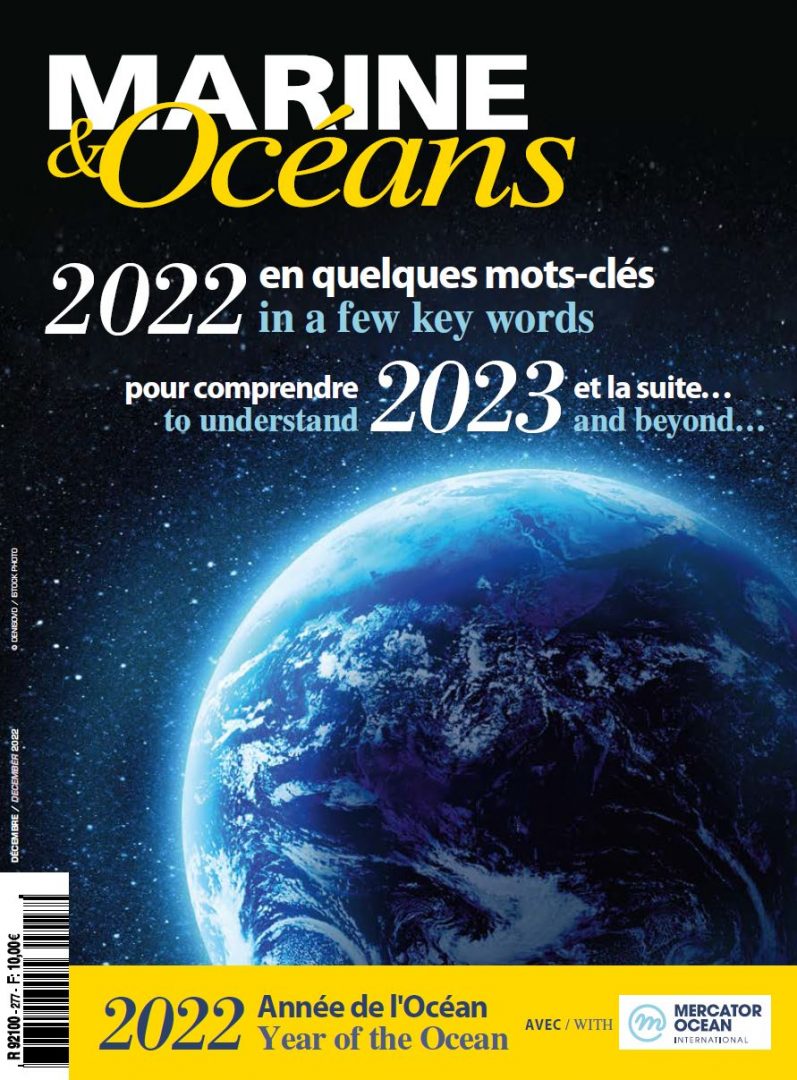“In terms of nuclear propulsion, France is in the top league.”
TechnicAtome has been the expert in nuclear propulsion in France since 1972. Its CEO, Loïc Rocard, tells us more about this French flagship’s expertise as well as its civil and military projects.
Interview by Eugénie Tiger (December 2022)
* * *
What is TechnicAtome’s area of expertise?
We specialise in the design, construction, commissioning and operational maintenance of small or “compact” nuclear reactors. In the military sector, these are the propulsion reactors used by the French Navy submarines and aircraft carrier. In the civil sector, we operate a test reactor for the French Alternative Energies and Atomic Energy Commission (CEA). It is a propulsion reactor too but on land, in this case. And we are also involved industrial activity, with the manufacture of fuel for nuclear propulsion.
Reactor, nuclear marine boiler or nuclear steam supply system, what are we talking about, exactly?
The term ‘nuclear marine boiler’ is used for naval nuclear propulsion, and ‘nuclear steam supply system’ is used in the civil nuclear industry, however, they constitute the same thing. The nuclear marine boiler or nuclear steam supply system (NSSS) produce steam as a result of the nuclear process. The steam is converted into mechanical and, ultimately, electrical energy. The reactor is the entire ensemble. The nuclear marine boiler contains the fuel, mechanical components capable of withstanding high pressures and temperatures – the vessel, steam generators, pressurisers and pumps, etc. – as well as the control mechanisms of the nuclear reaction and the water circuits, which are used to extract heat and cool the system permanently. At TechnicAtome, we only work on the nuclear marine boiler. Our partner, Naval Group, is responsible for the transformation of steam into energy to propel the boat.
How many companies in the world possess this expertise?
In this highly protected area, it is difficult to pin down exactly. But historically, only three countries have mastered all aspects of naval nuclear propulsion: the United States, Russia and France. This is also the case, though still to a lesser extent today, in the UK, China and India.
The reactor for the Duguay-Trouin nuclear-powered attack submarine (SNA), the second nuclear-powered attack submarine in the French Navy’s Barracuda programme, was commissioned last September. What progress has TechnicAtome made with this programme, and what are the main advances in propulsion?
The Duguay-Trouin SNA will make its first sea trial in the coming weeks (1), followed by several months of sea trials before final delivery. A total of six nuclear-powered attack submarines are planned by the end of the decade. They are almost twice as heavy as their Rubis class predecessors, whose design dates back to the 1970s. They are bigger, more armed, but also more comfortable for the sailors. The reactors that propel them are more powerful, quieter and more robust. They also comprise numerous advances in terms of user ergonomics thanks to digital control and touch screens.
You are also working on the French next generation nuclear ballistic missile submarine (SNLE 3G), which entered the production phase in 2021…
Four ships will be delivered between 2035 and 2050, as a replacement for those of the Triomphant class, which is currently operational. Their reactors are even quieter and safer. They have more digital technology on board, and will be up to the latest standards in terms of cyber security.
What about the K22 nuclear marine boiler that you are designing for the French next generation aircraft carrier (PANG) to replace the Charles de Gaulle (CDG)?
This new aircraft carrier will be almost twice as heavy as the CDG. The challenge is to provide the same operational constants in terms of propulsion, especially top speed. In addition, we need to increase the availability between major maintenance outages: it is seven to eight years today and needs to be 10 years in the future. Each reactor will have to be about 50% more powerful than those of the CDG. This means we have to push the bounds of our expertise a little further.
Could TechnicAtome’s expertise in the field of “compact” reactors enable France to design nuclear-powered underwater drones, equipped with a nuclear weapon, swarms of which could overwhelm and circumvent adversary defences without limit of distance or time?
Drones are not under consideration here today. Moreover, the nuclear reactors that we design and build are run by operators who have extensive training as atomic engineers and are able to intervene whenever circumstances require. People are a key safety factor.
What are your plans regarding the civil nuclear power sector?
Civil nuclear power accounts for approximately 20% of our business. In particular, we have been working with the CEA since the beginning of the studies for the Jules Horowitz Research Reactor (JHR). Its purpose will be to carry out tests and provide data for research into the behaviour of materials subjected to irradiation. It will also be used to produce isotopes for nuclear medicine. Today, the JHR is in an advanced stage of execution. However, there are still several years of work to be done and this commitment reflects our long-term commitment to the civil nuclear sector. At the same time, we are involved in the small modular reactor project called NUWARD, with EDF, Naval Group and the CEA. A NUWARD reactor has about one tenth of the power of an EPR. Construction of the first of the series is due to get under way in France in 2030.
How does TechnicAtome maintain its expertise and skills?
Our expertise is specifically covered by the national defence secrecy. As we cannot deal with the outside world, we maintain and pass on our skills internally, from older to younger people. Our aim is to maintain our level of expertise and, if possible, to keep advancing to ensure that France stays in the top league. To our advantage, we have favourable historical circumstances: we have a historical proximity to the CEA and its resources, we have always had projects to undertake, and as a result, we are in contact with different generations of vessels simultaneously. Our specialised experience spans more than a century, from the Rubis nuclear-powered attack submarine designed in the 1970s and still in operation to the beginning of production of the SNLE 3Gs, the last of which are expected to remain in service until 2090. This wide-ranging activity is conducive to the maintenance and further development of our expertise. The extraordinary nature of the programmes we are entrusted with, which are at once atypical, specific and innovative, means that we have no difficulty in recruiting. We do this from a dynamic talent pool and have loyal and very competent employees.


